|
Page < 1 2 3 4 5 6 7 8 9 10 11 12 13 14 15 >
Motives of the British East India Company - To convert and Conquer
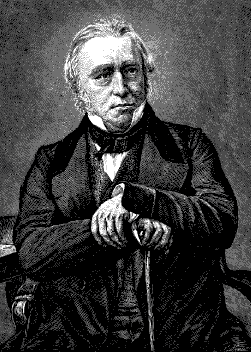 Lord
Thomas Babbington Macaulay (1800-59)
was the first Law Member of the Governor-General's Legislature and is best known
for introducing English education in India. Lord
Thomas Babbington Macaulay (1800-59)
was the first Law Member of the Governor-General's Legislature and is best known
for introducing English education in India.
He wrote in his
notorious 1835 Minute that Hinduism was
based on
"
a literature admitted to be of small intrinsic value ...(one) that inculcates
the most serious errors on the most important subjects ... hardly reconcilable
with reason, with morality...fruitful of monstrous superstitions. " Hindus
had therefore been fed for millennia with a "false history, false
astronomy, false medicine ...in company of a false religion."
Dismissing
with incredible arrogance the profound speculation and beautiful language of the
Sanskrit classics, he said, " I doubt whether the Sanskrit literature be as
valuable as that of our Saxon and Norman progenitors."
Macaulay advised in 1835 the creation of an
Indian elite through Western style education, making them
"Indian
in blood and color, but English in taste, in opinion, in morals, in intellect.' The
policy was frankly one of Westernizing India. Though
not a missionary himself, he sincerely believed that Christianity held the key
to the problems of administering India.
(source: India:
A World in Transition - By Beatrice Pitney Lamb
p. 194)). For
more refer to chapter European
Imperialism and First
Indologists.
***
 Francisco
Gil-White
is an anthropologist who was Assistant Professor of Psychology at the
University
of
Pennsylvania
and lecturer at the Solomon Asch Centre for Study of Ethnopolitical Conflict.
He holds a Masters Degree in Social Sciences from the
University
of
Chicago
and a PhD in Biological and Cultural Anthropology from UCLA. Francisco
Gil-White
is an anthropologist who was Assistant Professor of Psychology at the
University
of
Pennsylvania
and lecturer at the Solomon Asch Centre for Study of Ethnopolitical Conflict.
He holds a Masters Degree in Social Sciences from the
University
of
Chicago
and a PhD in Biological and Cultural Anthropology from UCLA.
He
has observed:
"The
evidence supports the view that the ancient Iranians were a development of
ancient Indian culture, emerging into their own as a result of population
movements out
of the
Indian subcontinent, where civilization began.
However, this is poorly
understood because for the last 150 years a remarkably tenacious
but unsupported theory of Indian history has been taught in the West. It
has also been taught in
India, because the dominant educational system there was set up by the British
colonialists and did not undergo significant changes after independence.
This
mistaken picture of Indian history is a direct product of nineteenth-century
European politics—especially German politics,
combined with the colonial and missionary interests of the
British Empire.
It has little to do with India."
"The
British were looking for ways to undermine Indian culture and pride in order
more effectively to rule
India."
(source: The
Crux of World History - By Francisco Gil-White).
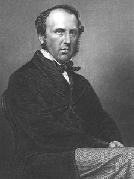 Lord Canning
(1812 - 1862) Governor General of India from 1856 - 1862 and the first
Viceroy in India. In the middle of the 1857 uprising, he wrote to a British official: Lord Canning
(1812 - 1862) Governor General of India from 1856 - 1862 and the first
Viceroy in India. In the middle of the 1857 uprising, he wrote to a British official:
“As we must rule 150 millions of
people by a handful (more or less small) of Englishmen, let us do it in the
manner best calculated to leave them divided (as in religion and national
feeling they already are) and to inspire them with the greatest possible awe of
our power and with the least possible suspicion of our motives.”
(source:
The Muslims of British
India - By P Hardy
p. 72).
Refer to
The Saraswati Flows on the Continuity of Indian Culture - By B B Lal
and
The Lost River: On the Trail of the Saraswati - By Michel Danino
Cannibalizing
Cultures
- Pests from the West
Its Imperialism,
Stupid
Sesha
Samarajiwa
( ? ) from Sri Lanka is interested examining foreign religious agents’ role as
Fifth Columnists of neocolonialism/neoimperialism. He has written:
"Evangelists
belong to a long line of pests from the West who have come and keep coming like
locusts to colonize our souls and cannibalize our cultures.
The
latest incursions are merely a continuation
of the 500-year-old sorry saga
of Asia, Africa and
South America, which began with the arrival of the Portuguese and the Spaniards. Some have
never recovered from the machinations of their priests and the savagery of their
conquistadors. The baton of imperialism has passed from the Europeans to the
Americans. That is not to say that the rest of the West has dropped out. They
have not. They are very much in the game. It’s just that the Americans are in
the lead, the new Romans on the rampage.
We know
well how the Europeans won the West. They won it through mass
genocide of the native populations
in North and
South America. In
South America, hundreds and thousands of natives who resisted conversion were garroted. There
is a poignant painting depicting such conversions. It shows armored Spanish
soldiers garroting native priests, while a Spanish priest holds up a large
cross. More terrified natives await their turn. On the side, another Spanish
priest feeds stacks of ancient gold-leaf books of the
Mayans
into a fire. On the
face of the Mayan priests, a look of utter sadness mixed with resignation.
In places
like
India
and
Sri Lanka, they were no better. They too faced abject horrors. In his book, Christianity's
scramble for India, Navaratna
Rajaram
says that “the
Christian Missionary is neither a Christian nor a missionary. In fact, he is a
racist and a white supremacist in priestly guise.” Their
Buffalo Bills and their Wild Bills, their Custers and their Cortezes, and the
long line of predators
and priests
made sure that the sorry remainder of once-proud nations would remain so, while
they ruled the roost in lands drenched with native blood. Many weaker cultures
succumbed to the relentless onslaught from the West. They either slaughtered
those who resisted or they sowed the seeds of abjection and their eventual
self-destruction. Even today, we see the pathetic dregs of once-noble nations
staggering around native reservations and barrios in North and South America, in
Australia, in
Canada, in New Zealand. They have lost their spirit. They have lost their will to live. They seem
embarrassed to be alive. They are self-destructing. At best, they are performing
monkeys titillating whites with a thirst for the exotic. These are abject
peoples, vanishing tribes. Now, not satisfied with ruling their large chunk of
raided real estate, they are hell-bent on extending their
hegemony over the
whole world. They
howl in protest when the natives resist.
Human misery is happy hunting grounds
for these
spiritual cartels.
They strike when their targets are at their weakest or bomb them to submission
to make sure they are at their weakest. Thus softened up, they are susceptible
to inducements and brainwashing. They are canny. To ‘convert’ people, you
must first make them despise and reject
what had sustained their people for millennia. So they vilify their faith or
convince them it is a spent force or dark superstition. In so doing, they make
us spit
on our heritage."
(source:
Beware
of wolves in sheep’s clothing
- By Sesha Samarajiwa - Asian Tribune October
9, 2007). Refer
to Communist
Historians: The Enemy Within – By Yvette
Rosser.
Refer to Year
501: The Conquest Continues - By Naom Chomsky and It's
Imperialism, Stupid - By
Noam Chomsky.
***
The
Deliberate Distortion by the Gora Sahibs
The
wise may arraign or applaud
Wealth may flow in or vanish
as it will,
Death may occur today
or when the epoch ends
The steadfast never stray
from the path of righeousness
-
written in Sanskrit by Bhartrihari
in
Nitishatak
***
This is nothing but a criminal
act of robbing Indian civilisation of its antiquity.
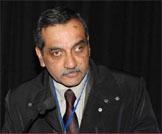 The
ancient Indian history as taught today to our youth is mostly based on a number
of distortions and mis-dated chronology that Kosla
Vepa, the director of the
Indic Studies Foundation, says: The
ancient Indian history as taught today to our youth is mostly based on a number
of distortions and mis-dated chronology that Kosla
Vepa, the director of the
Indic Studies Foundation, says:
“were deliberately engineered to create
confusion and inferiority complex among Indians” by the British Raj’s
pseudo-historians of 19th century. It is time for us Indians to reclaim our
history from the clutches of the Gora sahibs and set right these distortions."
Prof. B.B. Lal (former DG, ASI) in his
paper at the International Conference on Indian History, Civilisation
and Geopolitics to be held from January 9 2009 at New Delhi, has given
several examples of these distortions in Indian history.
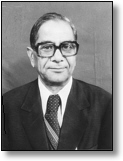 The
Deliberate Distortion Number One engineered by that infamous rogue Max Mueller
that is still haunting us Indians today: The
Deliberate Distortion Number One engineered by that infamous rogue Max Mueller
that is still haunting us Indians today:
Way
back in the 19th century, the renowned German scholar
Max Muller dated the Vedas to circa 1200
BCE. This he did on a very ad-hoc basis. Having accepted that the Sµutra
literature could be as old as the sixth century BCE, he assigned a duration of
two hundred years to each of the preceding periods, namely those of the
Araynakas, Brahmanas and Vedas. Thus, 600+200+200+200= 1200 BCE was his
ready-made date for the Vedas.
However,
when his contemporary scholars, such as Goldstucker,
Whitney and Wilson raised
objections to this kind of ad-hocism, he relented and came out with the
following statement:
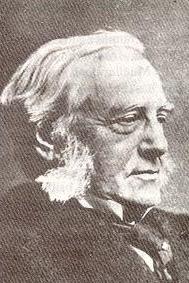 “I
have repeatedly dwelt on the merely hypothetical character of the dates, which I
have ventured to assign to the first periods of Vedic literature. All I have
claimed for them has been that they are minimum dates, and that the literary
productions of each period which either still exist or which formerly existed
could hardly be accounted for within shorter limits of time than those
suggested.” But when even this explanation-cum-apology did not satisfy the
scholars, Max Muller threw up his hands in sheer desperation. His confession, as
follows, is worth noting (Max Muller 1890, reprint 1979): “I
have repeatedly dwelt on the merely hypothetical character of the dates, which I
have ventured to assign to the first periods of Vedic literature. All I have
claimed for them has been that they are minimum dates, and that the literary
productions of each period which either still exist or which formerly existed
could hardly be accounted for within shorter limits of time than those
suggested.” But when even this explanation-cum-apology did not satisfy the
scholars, Max Muller threw up his hands in sheer desperation. His confession, as
follows, is worth noting (Max Muller 1890, reprint 1979):
“If
now we ask how we can fix the dates of these periods, it is quite clear that we
cannot hope to fix a terminum a qua [sic]. Whether the Vedic hymns were composed
[in] 1000 or 1500 or 2000 or 3000 BC, no power on earth will ever determine.”
In so far as Max Muller was concerned, the matter was closed from his side. But
the greatest irony is that his original fatawa of 1200 BCE, given in the 19th
century, is sill ruling the roost in certain quarters even in the 21st century!
The disastrous effect of this fatawa was seen in the 1920s when the Harappan
Civilization was discovered and attempts were made to identify its authors. On
the basis of the occurrence of several objects of this civilization in deposits
of certain already-dated West Asian cultures, it was assigned to the 3rd
millennium BCE.
Was it necessary for Mueller to circulate these dates about the Vedas and other
literature to others when he himself admitted that no power on earth could
determine when these holy books actually got written, “whether in 1000 or 1500
or 2000 or 3000 BC”? It is a crying shame that
this date of 1200 BC as origin of the Vedas pulled by Mueller out of his hat is
still being taught to Indian school children
as a “fact.”
(source: Did
the Vedas get Written around 1200 BC? Says Who? - indianrealist.com).
Refer to
Communist
Historians: The Enemy Within – By Yvette
Rosser.
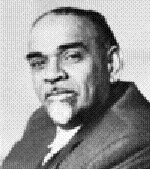 K.
M. Panikkar (1896-1963) Indian scholar, journalist, historian
from Kerala, administrator, diplomat, Minister in Patiala Bikaner and Ambassador
to China, Egypt and France. Author of several books, including Asia
and Western Dominance,
India Through the ages and
India
and the Indian Ocean. K.
M. Panikkar (1896-1963) Indian scholar, journalist, historian
from Kerala, administrator, diplomat, Minister in Patiala Bikaner and Ambassador
to China, Egypt and France. Author of several books, including Asia
and Western Dominance,
India Through the ages and
India
and the Indian Ocean.
In
'A
Survey of Indian History’ (1954) he says:
‘One thing, however, is
certain and can no longer be contested—civilization did not come to India with
the Aryans. This doctrine of the Aryan origin of Indian civilization which finds
no support in Indian Literature which does not consider the Dasyus (Dravidians)
as uncivilized, is the result of the theories of
Indo-Germanic scholars who held that everything valuable in the world originated
from the Aryans. Not only is Indian civilization pre-Vedic, but the
essential features of Hindu religion as we know it today were perhaps present in
Mohenjo-Daro."
(source: A
Survey of Indian History - By K M
Pannikkar p. 4). Refer to Communist
Historians: The Enemy Within – By Yvette
Rosser.

Sheldon Pollock Professor of Sanskrit and Indian Studies at
Columbia University has said,
"Colonialism nearly killed India's capacity to know its past;
globalization threatens to destroy its will."
(source:
Digital Memory - By
Sugata Srinivasaraju - outlookindia.com).
Refer to
The identity of Indians – By Subramanium Swamy
Refer to
The Saraswati Flows on the Continuity of Indian Culture - By B B Lal
and
The Lost River: On the Trail of the Saraswati - By Michel Danino
Prof.
Prodosh Aich
of
Oldenberg university
and author of the book
Lies with long legs is of
great value in exposing the
fact that the Emperor has no clothes. He
has succeeded in establishing that entire understanding of India of the western
world developed by self claimed scholars is totally erroneous since the initial
attempt to comprehend ancient India through Vedas was itself faulty.
He has very rightfully questioned the validity of the works of the famous
western scholars who went on to translate Vedic literature from Sanskrit
language into Italian, English and German. Majority of them did not even set
their foot on the Indian soil and those, who came to India, did not learn
ancient language in any organized manner but in an auto didactic fashion.
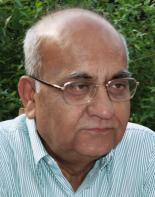 Translation from one language to another, it is universally accepted, needs
almost an equal command on both the languages. But majority of the Western
Sanskrit scholars did not learn or rather could not learn Sanskrit. Since
Sanskrit was not a spoken language, it was all the more difficult for them to
develop language skills required for translation. Translation from one language to another, it is universally accepted, needs
almost an equal command on both the languages. But majority of the Western
Sanskrit scholars did not learn or rather could not learn Sanskrit. Since
Sanskrit was not a spoken language, it was all the more difficult for them to
develop language skills required for translation.
Based on this fact, the author has undertaken a research that leads to the
prevalent and popular viewpoint that colonialist
Imperial England had prepared a concerted and well conceived design to
establish the superiority of white, blue eyed, blond -Christian culture over all
other cultures which they opted to define as “primitive” and particularly that
of India. Scholars after scholars, even after the rolling back of
colonial empire, have continued to overlook the material that would have gone a
long way to remove well laid myths and negative understanding about Indian
society, polity and culture.
Moreover, it would raise questions on popularly accepted theories on India such
as Aryans came to this part of the world from the North or they emigrated here
and then pushed back the original inhabitants from north to south of India.
In an eye opening revelation, the author has successfully established that a
Jesuit father Roberto de Nobili, in his
missionary zeal, went to the extent of claiming that he was able to find out the
lost Yajurveda which in fact was got written by him to establish that there was
indeed a relationship between Christianity and ancient Indian practices that
were being preserved and followed by Brahmins. Roberto de Nobili, in order to
win the confidence of the local Brahmin community, even calls himself as Brahmin
from Rome.
Racial terminology was used to create a conscious divide between the ruled and
the ruling classes by terming them as “us” and “them”. So much so that a new
discipline called as “Ethnography” came to be established at the European
academic institutions.
“Us” and “them”, alien and local, Aryans and non-Aryans, Indo-European or
Indo-German, were employed by hired scholars or rather court writers to create
an impression or an illusion that the Europeans were racially superior to all
others.
"Why did British occupants narrate a (history from far off Bengal, which was
eagerly taken up by many Europeans to embroider and elaborate that tale in many
fanciful facets? It was just a harmless story of a conquest. No. All these
stories were designed as the "historical justification"
for looting, building strongholds, colonising foreign lands with the purpose of
sustained exploitation. And they were presented as an inherent law of
evolutionary development of mankind. The conquerors, the deliberate killers, the
occupants, the exploiters from Christian Europe were hailed for having brought
culture and civilisation into the "colonies". They were just following the same
pattern of those nomads on grazing grounds, the "Aryans" from the Central
Asiatic steppes, who came in some "pre historic" period and brought civilisation
into India. The Christians "ruffians" were just treading on the footprints of
the "Aryans". What could have been wrong with that?" the author poses an
interesting observation.
The book, by using unflinching and convincing source material, has gone on to
prove that a concerted and conscious effort was made to establish the
superiority of the white-blond-blue eyed- Christian culture over all other
cultures, societies and people.
(source:
Lies with long legs - By Prodosh Aich Samskriti). Refer to
Macaulays, Muellers exposed - By Satish Misra - tribuneindia.com
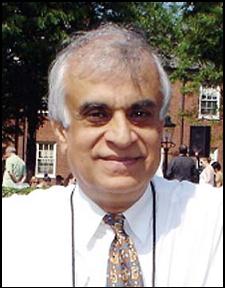 Rajiv
Malhotra ( ? ) After
studying in Delhi's St. Columba's High School and then St. Stephen's College,
Rajiv arrived in the US in 1971 to study Physics and Computer Science. His
corporate careers and business entrepreneurship included the computer, software
and telecom industries. He now spends full time with The
Infinity Foundation, a non-profit organization in Princeton, New
Jersey. In a speech in February 2009 he said: Rajiv
Malhotra ( ? ) After
studying in Delhi's St. Columba's High School and then St. Stephen's College,
Rajiv arrived in the US in 1971 to study Physics and Computer Science. His
corporate careers and business entrepreneurship included the computer, software
and telecom industries. He now spends full time with The
Infinity Foundation, a non-profit organization in Princeton, New
Jersey. In a speech in February 2009 he said:
Invasion Theory
of India - Then
there is this idea that everything good about India was imported into India. The
so-called Aryans brought Sanskrit. The Greeks brought philosophy and rational
thought; Hinduism was a colonial construction; Indian culture was started by the Mughals and British gave Indians a nation and cricket and now we have to import
our human rights from America."
(source: Where
is India in the Encounter of Civilizations? - By Rajiv Malhotra -
indianrealist.com).
Western Academic Constructions Lead to Violence
In the past five centuries, the European nations colonized many regions of Asia,
Africa, and the Americas. These Western powers variously imposed a Eurocentric
worldview on the colonized cultures. The histories of the local cultures, as
well as a global historic narrative, were constructed to justify colonization.
Today, even though many of these biases have been exposed, they still wield
power in the academic and socio-political discourse.
Unobjective and
Biased scholarship based on Race Science has led to violence around the world
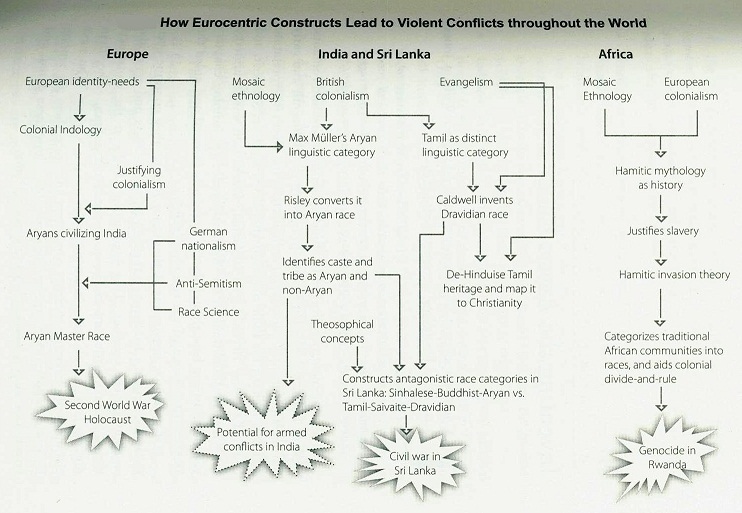
How Eurocentric Constructs Lead to Violent
Conflict throughout the world
(image source:
Breaking India: Western Inventions and Dalit Faultlines -
By Rajiv Malhotra and Aravindan Neelakandan
p. 11).
***
India
In the late 18th century, the Indologist Max Muller proposed the
Aryan category strictly as a linguistic group, but it soon got transformed into
the Aryan race by colonial administrators who used Race Science
to make a
taxonomical division of traditional Indian communities. The castes designated as
‘non-Aryan’ were marginalized or excluded in depictions of Hindu society. In
parallel, the Church evangelists working in South India constructed a Dravidian
race identity. The de-linked Tamil culture from its pan-Indian cultural matrix,
and claimed that its spirituality was closer to Christianity than to the Aryan
North Indian culture.
Refer to
The Myth of Saint Thomas and the Mylapore Shiva Temple
- By Ishwar Sharan
Sri Lanka
Bishop Robert Caldwell and
Max Muller categorized the Tamils as Dravidians and the Sinhalese as
Aryans. This division was encouraged by colonial administrators. Gradually, many
south Indians who had assumed a Dravidian identity adopted this division and
turned it into antagonism toward the so-called Aryans. The result has been the
deadly ethnic civil war that continued in
Sri Lanka for a few decades.
Africa
The Hamitic myth of the Bible, in which the
descendants of Noah’s son Ham were cursed, was used by slave traders and slave
owners to justify slavery. Hamitic linguistic groups were identified and
separated from the rest of Africans. African civilization’s contributions were
explained as the work of an imaginary sub-race of Whites invading and civilizing
Africa. Western classification of traditional African communities into races led
to bitter rivalries, including genocide, as in Rwanda.
The Afro-Dalit project
The Afro-Dalit project purports to paint
Dalits as the ‘Blacks’ of India and non-Dalits as India’s ‘Whites.” The history
of American racism, slavery and Black/White relations is thus superimposed onto
Indian society. While modern caste structures and inter-relationships have
included long periods of prejudice toward Dalits, the Dalit experience bears
little resemblance to the African slave experience of America. But taking its
cue from the American experience, the Afro-Dalit project attempts to empower
Dalits by casting them as the victims at the hands of a different race.
Balkanized India -
The Unfinished Business of Colonizing West
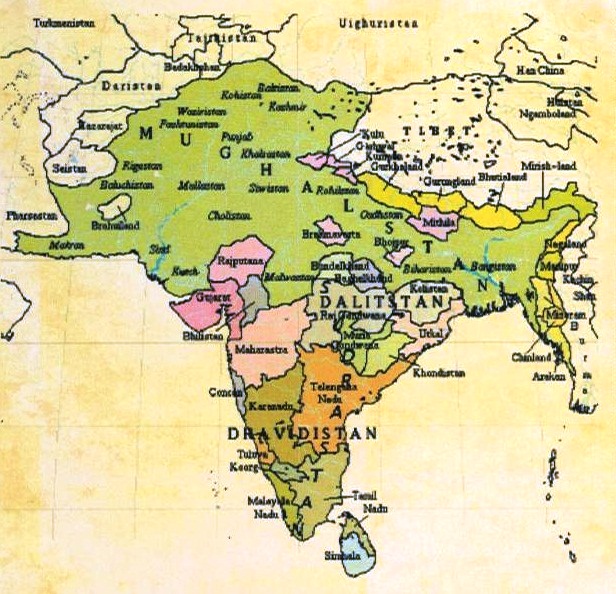
Spiritual
Imperialism - Ambitions of The
Desert Bloc religions - Christianity and Islam still remain the same today.
Social work/Human rights/democracy -
are
a smokescreen for a
religious agenda.
***
Atrocity Literature
Justification for Colonial Rule in India
Atrocity literature played its part in downgrading women’s right, too.
Veena Oldenburg’s seminal book,
Dowry Murder, gives details on how the
British encouraged the Indians to dish out cases of atrocities that could then
be blamed on the native cultures. They
systematically compiled these anecdotes, mostly
unsubstantiated and often exaggerated and one-sided. This became a
justification to enact laws that downgraded the rights of common citizens. The
book shows how the dowry extortions that have become so common in middle-class
today, were actually started when women’s traditional property rights were taken
away by the British through convoluted logic.
(image source:
Breaking India: Western Inventions and Dalit Faultlines -
By Rajiv Malhotra and Aravindan Neelakandan
p. 1 - 11 and p. Introduction).
Refer to
The St Thomas In India History Swindle
- apostlethomasindia.wordpress.com and
The Hoax of St. Thomas - By V Sundaram
***
The
year was 1783, nearly 217 years ago, that the British had lost its 13 colonies
in America, and now it was necessary to fully concentrate on India. The East
India Company representing the British, was trading since 1690, and it now
became necessary to plan a strategy whereby a British rule can be established in
a country inherently different from Canada, America and Australia.
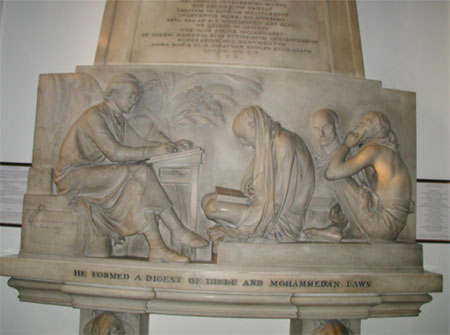
Sir William Jones with Brahmins
at his feet.
The
picture symbolizes how academic Indians today often remain under the glass
ceiling as “native informants” of the Westerners. Yet in 19th century
Europe, Sanskrit was held in great awe and respect, even while the natives of
India were held in contempt or at best in a patronizing manner as children to be
raised into their master's advanced “civilization.”
Sir William Jones (1746-1794)
the first British to master Sanskrit and study the Vedas, wrote to Sir
Warren Hastings how to spread "our pure faith" (Christianity) as "no mission from
the Church of Rome will ever be able to convert the Hindus."
Watch
video The
Myth of Aryan invasion theory - Part I and Part
II and Part
III and Myth
of Aryan Dravidian Divide and Dwaraka
- A Lost City of Lord Sri Krishna.
Watch
Scientific
verification of Vedic knowledge
and The
Saraswati River
- youtube.com. Watch
New
Discoveries on
India
's History
Refer
to Romila
Thapar’s Kluge Prize – By Dr. Gautam Sen - vigilonline.com.
Refer to Communist
Historians: The Enemy Within – By Yvette
Rosser.
Refer
to Invading
the Sacred: An Analysis of Hinduism Studies in America
- By Krishnan Ramaswamy, Antonio de Nicolas and Aditi
Banerjee.
Refer to What
Every "Ugly American" Must Know about the "Civilized British
- www.larouchepac.com.
Refer to The
Myth of Aryan Invasion of India
- By M L Goel.
Refer to Be
wary of English translations of Hindu scriptures - By Sheena Patel
***
In
the year 1784, under the patronage of Governor General Warren Hastings, the
Asiatic Society of Bengal was formed with a membership of 30 Europeans, headed
by Sir
William Jones as
president. In the very year, he wrote to Sir Warren Hastings how
to spread "our pure faith" as "no mission from the Church of Rome
will ever be able to convert the Hindus."
He
wrote about translating into Sanskrit and "then quietly to disperse the
work among the well-educated natives."
He goes on to state that "all the 14 Menus (Manus) are reducible to
one," and that "a connection subsisted between the old idolatrous
nations."
(source: West
Asian languages derived from Indus script - By Bhikhu Patel).
Refer to Geopolitics
and Sanskrit Phobia
- By Rajiv Malhotra - sulekha.com
and chapters on Conversion,
First
Indologists and European
Imperialism.
The Ayran Invasion Theory - AIT
specifically justified
the presence of the British among their “Aryan cousins” in India, being
merely the second wave of Aryan settlement there.
It supported the British view of India as merely a geographical region
without historical unity, a legitimate prey for any invader capable of imposing
himself. It provided the master
illustration to the rising racialist worldview:
(1) the dynamic whites entered the land of the indolent
dark natives;
(2) being superior, the whites established their dominance and imparted their
language to the natives;
(3) being race-conscious, they established the caste system to preserve their
racial separateness;
(4) but being insufficiently fanatical about their race purity, some
miscegenation with the natives took place anyway, making the Indian Aryans
darker than their European cousins and correspondingly less intelligent and less
dynamic;
(5) hence, for their own benefit they were susceptible to an uplifting
intervention by a new wave of purer Aryan colonizers.
Questioning the Aryan Invasion Theory (AIT) is now
widely presented as a part of the alleged hinduization or “saffronization”
of history by the BJP-led government in India.
Through the media, the
West has vaguely heard an echo of the commotion about this development among
Indian Marxist historians trying to hold on to their power positions.
Indo
- Anglian
snobbery:
English education and more recently the westernization
of the workplace, of popular music and other everyday circumstances have
generated a class of Indians quite alienated from and ignorant of native
culture. More
than the English-employed Babus of yore, they delight in mocking and belittling
native culture. In their hands, the
AIT is simply an instrument to tease Indian “chauvinists” and deconstruct
the very notion of a distinct Indian or Hindu civilization.
With the decline of ideology and the rise of the commercial outlook in
the media, this supercilious and nihilistic attitude is now a rising force in
the opinion landscape, but it has always been around in non-Marxist sections of
independent India’s anglicised elite.
(source: The
Politics of the Aryan Invasion Debate - By Dr. Koenraad Elst -
bharatvani.org - Indology Review).
Refer to chapters on First
Indologists and European
Imperialism.
The Fiction of Aryan Invasion Theory
The
preplanned scheme of Jones to introduce the idea that Sanskrit was an outside
language gave birth to the speculation of the imagined existence of some Central
Asian (Aryan) race who spoke Sanskrit and who brought Sanskrit language to India
when they forcefully entered the country. In this way, the fiction of the Aryan
Invasion was created much later, sometime in the 1800’s by the same group of
people and was extensively promoted by Max Muller.
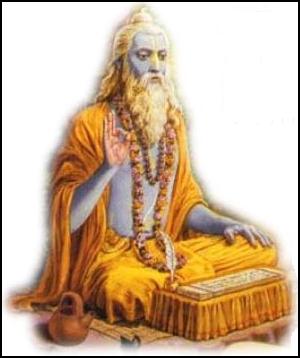
Manu
Smriti (2/21,22) describes the exact location of Aryavart which lies from the
south of the Himalayas and all the way up to the Indian Ocean.
Its inhabitants
are called the Arya.
In this Imperialist history, India is portrayed as the
land “conquered” first by the ‘Dravidians’, then by the ‘Aryans’,
later by Muslims, and finally by the British. Otherwise, everything else is
mythical. Our history books today exhibit this obsession with foreign rule.
Watch
video - The
Myth of Aryan invasion theory - Part I and Part
II and Part
III and Myth
of Aryan Dravidian Divide and Dwaraka
- A Lost City of Lord Sri Krishna.
Watch
Scientific
verification of Vedic knowledge
and
Watch The
Saraswati River
- youtube.com. Watch
Lost
/ Submerged city of
Dwaraka
– The Learning
Channel video. Watch
New
Discoveries on
India
's History. Refer to The
Myth of Aryan Invasion of India
- By M L Goel and Refer to Communist
Historians: The Enemy Within – By Yvette
Rosser.
***
It
is a well known fact that India is called Aryavart. Manu
Smriti (2/21,22) describes the exact location of Aryavart which lies from the
south of the Himalayas and all the way up to the Indian Ocean. Its inhabitants
are called the Arya. But it is not a locally spoken name. But it is
not a locally spoken name. Commonly, we write Bharatvarsh for India in general
and scriptural writings. The territory of India (or Bharatvarsh for Aryavart)
during the Mahabharat war (3139 BC) was up to Iran. So the ancient Iranian
people also used to call themselves the Aryans.
People
of the British regime using this information, fabricated
a story that some unknown race of Central Asia who came and settled
in Iran were called the Aryans and they were Sanskrit speaking people. They
invaded India, established themselves permanently, and wrote the Vedas. Those
who introduced this ideology never cared to produce any evidence in support of
their statement because it never existed, and furthermore, fiction stories
don’t need evidences as they are self-created dogmas.
If
someone carefully looks into the ancient history of India, he will find that
there was no such thing as an Aryan invasion. Since the very beginning of human
civilization, Hindus (Aryans) are the inhabitants of Bharatvarsh (India) which
is called Aryavart. In the Bharatiya history
there are descriptions of Shak and Hun invasions and also of the Muslim
invasions but never an Aryan invasion.
Max
Muller promoted this invasion story and formulated his dates of Vedic origin
accordingly.
(source:
The
True History and the Religion of India: A Concise Encycloedia of Authentic
Hinduism - By Swami Prakashanand Saraswati p.
266- 267).

An Englishman getting a
pedicure from his Indian servants.
The Tyranny of British Rule: "The British have set
themselves up as the master race in India. British rule in India is fascism,
there is no dodging that."
"It is in India, of all places on the earth, that the
superiority of the white over the colored races is most strikingly
demonstrated."
The Aryan Invasion Theory
served as a theoretical underpinning of the historical legitimacy of the British
presence in India. That the British appeared at the end of a long line of
invaders of the land, beginning with the Aryans.
Refer to Romila
Thapar’s Kluge Prize – By Dr. Gautam Sen - vigilonline.com. Refer to Communist
Historians: The Enemy Within – By Yvette
Rosser.
Refer to What
Every "Ugly American" Must Know about the "Civilized British
- www.larouchepac.com
and chapter on European
Imperialism
***
The Aryan Invaders - Hindu
historical records as fiction?
The Western experts concluded, somewhere between 1500 and
1000 BE, the primitive barbarians who composed the Veda invaded northern India,
driving the helpless Dravidians into the southern part of the subcontinent where
they live today. There are two difficulties with this popular theory:
- Today’s
northern Hindus have absolutely no memory of having ever driven the
Dravidians out of north India. None of their ancient manuscripts mentions
any such thing.
- Today’s
Dravidians have absolutely no memory of ever having lived in North India. In
fact, their ancient traditions suggest that their forebears came from the
south, not from the north.
Minor problems like these did not
discourage the Europeans and American scholars of the time. Thousands of pages
of the Hindu’s own historical records were simply dismissed as fiction.
Over
and over the Vedas mention a mighty river called the Saraswati where Aryan
communities flourished and Vedic priests sang hymns of glorious gods, like Indra.
Western scholars speculated that the Saraswati might have been one of
the rivers to the east of the Aral Sea in Soviet Central Asia. Perhaps, some
even speculated, it had never been anything but a figment of the ancient poet's
imaginations!
In
the early 1980's proponents of the Aryan Invasion Theory, got a terrible shock.
Satellite imaging was revolutionzing our knowledge of Earth's geography. It
allowed scientists to get a look at the planet from low orbit out in space.
Satellite photos of the dry bed of an enormous river, so huge it may have been
five miles across at one site. While that river was in business, it may been the
largest in the world, bigger even than than the Amazon today. The geologists
quickly established the river had dried up around 1900 BCE. Yet according to our
friend Max Muller the Veda hadn't been composed till at the very least 700 years
after the river disappeared. What was this? Poets
pretending they still lived alongside a river that vanished centuries before?
Not darn likely!
(source:
Hinduism
- By Linda Johnsen p. 20 - 24). Refer to chapter on First
Indologists and European
Imperialism. Refer to Out
of India Theory - wikipedia.org
Westward
movement?
Shrikant
Talageri
proceeds to demonstrate that the fragmentary Vedic data and the systematic
Puranic account tally rather splendidly. The
Puranas relate a westward movement
of a branch of the Aila/Saudyumna clan or Lunar dynasty from Prayag (Allahabad,
at the junction of Ganga and Yamuna) to Sapta Saindhavah, the land of the seven
rivers. There, the tribe splits into five, after the five sons of the
conqueror Yayati: Yadu, Druhyu, Anu, Puru, Turvashu. All the rulers
mentioned in the Vedas either belong to the Paurava (Puru-descended) tribe
settled on the banks of the Saraswati, or have come in contact with them
according to the Puranic account, whether by alliance and matrimony or by war.
Later, the Pauravas (and minor dynasties springing from them) extend their power
eastward, into and across their ancestral territory, and the Vedic traditions
spread along with the economic and political influence of the metropolitan
Saraswati-based Paurava people.
This
way, the eastward expansion of the Vedic horizon, which has often been read as
proof of a western origin of the Aryans, is integrated into a larger history.
The Vedic people are shown as merely one branch of an existing Aryan culture,
originally spanning northern India (at least) from eastern Uttar Pradesh to
Panjab. The approximate and relative chronology provided by the dynastic
lists allow us to estimate the time of those events as much earlier than the
heyday and end of the Harappan cities. Later
the Anavas are said to have invaded Panjab from their habitat in Kashmir, and to
have been defeated and expelled by the Pauravas in the so-called Battle
of the Ten Kings, described in Rig Veda
7:18,19,33,83. The ten tribes allied against king Sudas (who belonged to
the Trtsu branch of the Paurava tribe) have been enumerated in the Vedic
references to the actual battle, and a number of them are unmistakably Iranian:
Paktha (Pashtu), BhalAna (Bolan/Baluch), Parshu (Persian), PRthu (Parthian), the
others being less recognizable: VishANin, AlIna, Shiva, Shimyu, BhRgu, Druhyu.
(source:
Aryan
Invasion Theory, a Reappraisal - By Shrikant Talageri). Refer to Communist
Historians: The Enemy Within – By Yvette
Rosser.

Excavations
at Mohenjadaro.
The
Vedic Corpus provides no evidence for the so called “Aryan Invasion” of
India
Thousands of pages
of the Hindu’s own historical records were simply dismissed as fiction by
European and American scholars.
Watch
video - The
Myth of Aryan invasion theory - Part I and Part
II and Part
III and Myth
of Aryan Dravidian Divide and Dwaraka
- A Lost City of Lord Sri Krishna. Watch
Scientific
verification of Vedic knowledge
Watch The
Saraswati River
- youtube.com
***
Koenraad Elst, Belgian scholar,
as pointed out, no Indian
until the mid-nineteenth century had heard of the notion that his ancestors were
invaders from Central Asia who had destroyed the native Indian civilization and
culture. But almost every history book now proclaims so. There was no
Aryan-Dravidian divide before, but many people in the south now believe they
were the original inhabitants of India who were pushed around and down south by
the invading Aryan tribes who imposed their Vedic culture and rituals on the
rest of India.
Winston Churchill who opposed any policy giving independence to
India, belligerently points out:
"We have as much
right to be in India as anyone there, except perhaps for the depressed classes,
who are the native stock."
He also points out how such a theory
was swallowed hook, line and sinker by a variety of Indians for a variety of
purposes: from Jyotirao Phule, the low-caste leader from Maharashtra, who said
that the "...Aryans came to India not as simple emigrants with peaceful
intentions of colonization, but as conquerors. to Keshab Chandra Sen leader of
the reformist Brahmo Samaj, who welcomed the British presence as follows:
"In the advent of the English nation in India we see a reunion of parted
cousins, the descendents of two different families of the ancient Aryan
race."
(source: Secular
"Gods" Blame Hindu "Demons" - By Ramesh N. Rao
Har Anand pub. ISBN 81-241-0808-0 p. 242 - 246).
Refer to
Evangelical Intrusions - By Sandhya Jain Rupa Publications.
The Aryan Invasion Theory
served as a theoretical underpinning of the historical legitimacy of the British
presence in India. That the British appeared at the end of a long line of
invaders of the land, beginning with the Aryans.
Rabindranath
Tagore (1861-1941)
poet, author, philosopher, Nobel prize laureate as early as 1902 (Bengali Samvat 1309) wrote that:
"There was no Indian in the history of India
written by foreigners: as if Indians do not exist; only those who have fought
and killed among themselves are real...we are not parasites of India; through
hundreds of centuries we have put down tens of thousands of roots in the heart
of this land, but unfortunately we have to read a type of history which makes
our children forget exactly this."
It appears that in
(the history of) India we are nobodies; only those who have come from outside
matter in (the history of this) land"
Tagore,
whose view of
India
and Indian history is rarely highlighted wrote a seminal essay entitled ‘The
History of Bharatavarsha’. In it he struck a cord parallel to R
C Majumdar’s:
“The
history of
India
that we read and memorize for our examinations is really a nightmarish account
of
India
. Some people arrive from somewhere and the pandemonium is let loose. And then
it is a free-for-all: assault and counter-assault, blows and bloodletting.
"
“If
Bharatvarsha is viewed with these passing frames of dreamlike scenes, smeared in
red, overlaid on it, the real Bharatvarsha cannot be glimpsed. These histories
do not answer the question, where were the people of
India
? Our real ties are with the Bharatvarsha that lies outside our textbooks. If
the history of this tie for a substantially long period gets lost, our soul
loses its anchorage. After all, we are no weeds or parasitical plants in
India
. Over many hundreds of years, it is our roots, hundreds and hundreds of them,
that have occupied the very heart of Bharatavarsha. But, unfortunately, we are
obliged to learn a brand of history that makes our children forget this very
fact. It appears as if we are nobody in
India
…”
(free translation from
original Bengali in Tagore's Collected Works,
vol. 4, 1965: 378 and A Thematic View of Indian
Civilization - By Michel Danino - The Hindu Renaissance Makar
Sankranti Yugabda 5108 p 10 - 11).
If Tagore were alive after
Independence and if he had then written like this, he would no doubt have been
accused of chauvinism or fundamentalism by the new India's
"mainstream" historians.
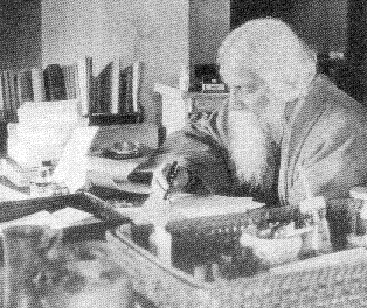

Rabindranath Tagore poet, author, philosopher, Nobel prize laureate. Tagore
with Albert Einstein in New York.
'A mathematician and a
mystic meet in Manhattan.'
If Rabindranath Tagore were alive after
Independence and if he had then written like this, he would no doubt have been
accused of chauvinism or fundamentalism by the new India's
"mainstream" historians.
Refer to Romila
Thapar’s Kluge Prize – By Dr. Gautam Sen - vigilonline.com. Refer to Communist
Historians: The Enemy Within – By Yvette
Rosser.
***
K.
M. Panikkar, the author of
A
Survey of Indian History has
written:
"Brought upon text books written by foreigners whose one object would seem to
have been to prove that there was no such thing as India, we had each to
'discover' India for ourselves.
Even
today there is a persistent attempt of Western scholars to argue that
"India was not a country but a congeries of smaller states, and the Indians
were not a nation but a conglomeration of peoples of diverse creeds and sects. Anybody
familiar with the relevant situation will know that this attitude still forms
the major undercurrent of Western scholarship on India.
(source: Colonial
Indology: Sociopolitics of the Ancient Indian Past - By Dilip K. Chakrabarti
p. 98, 122, 214 -240 and The Invasion That Never Was -
By Michel Danino and Sujata
Nahar p. 45). Refer
to Distortion
of Indian History and School Textbooks.
The Aryan invasion theory was hypothesized in the 19th
century to explain the similarities found in Sanskrit and the languages of
Europe. One such person who reported about this is Deen Chandora
in his article, Distorted Historical Events and Discredited Hindu Chronology,
as it appeared in Revisiting Indus-Sarasvati Age and Ancient India
(p. 383).
He explains that the idea of the AIT
was certainly not a matter of misguided research, by was a conspiracy to
distribute deliberate misinformation that was formulated on April 10, 1866 in
London at a secret meeting held in the Royal Asiatic
Society. This was "to
induct the theory of the Aryan invasion of India, so that no Indian may say that
English are foreigners...India was ruled all along by outsiders and so the
country must remain a slave under the benign Christian rule." This was a
political move and this theory was put to solid use in all schools and colleges.
As can be expected, most of those who were great proponents of the Aryan
invasion theory were often ardent English or German nationalists, or Christians
ready and willing to bring about the desecration of anything that was
non-Christian or non-European.
(source: Proof
of Vedic Culture's Global Existence - By Stephen Knapp p.
39).
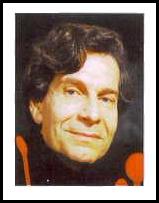 Guy
Sorman
(1944 - ) French
intellectual, writer, economist and a professor of political science at Paris
University, visiting scholar at Hoover Institution at Stanford and the leader of
new liberalism in France. Guy
Sorman
(1944 - ) French
intellectual, writer, economist and a professor of political science at Paris
University, visiting scholar at Hoover Institution at Stanford and the leader of
new liberalism in France.
He writes:
"The
Invasion theory has today become the standard explanation for the caste system,
though it came up only in the 19th century. Besides, all we have to attest the
Aryan invasion is a specious interpretation of the Mahabharata, which is like
searching the origins of European aristocracy in the works of Homer! In any
case, it is doubtful whether a single invasion, which was more likely a slow
infiltration of the North, could have succeeded in structuring so perfectly
Indian society along ethnic lines for over three thousand years. Finally, in
South India the caste system among the dark, skinned Dravidians is as rigid as
it is in the North, though the Aryans in all probability never reached
there.
The
racial origin of caste hypothesis tells us little about India but it does tell
us a great deal about the 19th century Westerners who invented the Aryan
invasion theory.
It was at the same
time that Sieyes and Augustin Thierry claimed that the French nobility was of
Germanic stock, whereas the lower classes were of Gallic origin; so the 1789
Revolution was a race war rather than a class war!
It
was also in the 19th century that appeared the myth of the Indo-Europeans being
at the source of all Western civilization and for this we have to thank British
authors who were taken up with evolutionist theory. Indian historians trained in
Europe have fallen victim to this myth but that does not make it any more
authentic. Later on, at the beginning of the 20th century, it became fashionable
to support the Marxist theory which replaced race with class, though its
premises were just as shaky.
(source: The
Genius of India - By Guy Sorman ('Le Genie de
l'Inde') Macmillan India Ltd. 2001. ISBN 0333 93600 0 p.
60-61). Refer to chapter on First
Indologists and European
Imperialism.
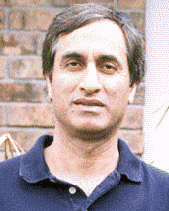 Dr.
Subhash Kak (1949 - ) is a widely known
scientist and a Indic scholar. Currently a Professor at Louisiana State
University, he has authored ten books and more than 200 research papers in the
fields of information theory, quantum mechanics, and Indic studies. He is a
Sanskrit scholar and is author of Astronomical
Code of the Rig Veda, and India
at Century's End:
Essays on History and Politics,
has observed: Dr.
Subhash Kak (1949 - ) is a widely known
scientist and a Indic scholar. Currently a Professor at Louisiana State
University, he has authored ten books and more than 200 research papers in the
fields of information theory, quantum mechanics, and Indic studies. He is a
Sanskrit scholar and is author of Astronomical
Code of the Rig Veda, and India
at Century's End:
Essays on History and Politics,
has observed:
Max
Muller is credited with the popularization of the theory that nomadic hordes of
horse-riding Aryans invaded India in mid-second millennium B.C.E., subjugated
the original inhabitants and imposed their culture and language on them. This
theory explained the fact that the language of North India and Europe belong to
the same family and that the myths of the Indian and the European worlds have
some commonality.
While
this theory provided an explanation within the framework of the then emerging
filed of archaeology, it suffered from serious flaws. Also the context in which
the word Aryan was used was wrong because this word in the earliest Indian
literature refers to culture and not any specific race or linguistic background.
A major flaw of the invasion theory was that
it had no explanation for why the Vedic literature that was assumed to go back
into the second millennium had no reference to any
region outside of northwest India. Furthermore, the astronomical
references in the Vedic literature allude to events in the third millennium
B.C.D. and earlier. Then there was the fact that the earliest Indian sciences
and literature and philosophy were very advanced indicating a very long
tradition of scholarship which the invasion model did not posit. Most
importantly, the discovery of the archaeological sites of the Indus-Saraswati
tradition, which go back to at least 6500 B.C.E. and which show cultural
continuity with the later Indian civilization, created a fundamental
contradiction for the model. If one could explain the cultural continuity by
arguing that the invading Aryans eventually adopted the culture of the original
inhabitants then how was one to explain the fact that they were able to impose
their language on the same people.
Once
the theory of this horse riding invaders, took root, any evidence that went
against this view was ignored or simply brushed aside as being ambiguous.
But the main reason that the Aryan invasion theory survived so long is because
questions about the process supporting the hypothesis were not asked.
Another
reason for the popularity of the invasion theory was that parallels were seen
with the conquest of the Americas by the Europeans. The fundamental
differences between the two situations were ignored. Europe of five hundred
years ago was densely populated unlike the steppes of Central Asia thirty five
hundred years ago. European expansion was imperial in design impelled in part by
capitalism and by the exclusionary world-view of Christianity in contrast to the
Indo-Aryans with their Old Religion that saw the world to be interconnected.
(source:
Astronomical
Code of the Rig Veda
- by Subhas Kak p 20 - 23). Refer to Communist
Historians: The Enemy Within – By Yvette
Rosser.
Refer
to Out
of India Theory - wikipedia.org
Scholarly
Trickery?
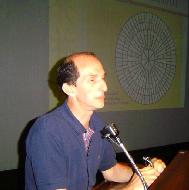 Michel
Danino (1956
- ) Born in 1956 at Honfleur (France) into a Jewish family recently emigrated
from Morocco, from the age of fifteen Michel Danino was drawn to India, some of
her great yogis, and soon to Sri Aurobindo and Mother and their view of
evolution which gives a new meaning to our existence on this earth. Michel
Danino (1956
- ) Born in 1956 at Honfleur (France) into a Jewish family recently emigrated
from Morocco, from the age of fifteen Michel Danino was drawn to India, some of
her great yogis, and soon to Sri Aurobindo and Mother and their view of
evolution which gives a new meaning to our existence on this earth.
He
has observed:
"The
Vedic Dasyus were arbitrarily identified with the Dravidians by the
scholars of the British Empire and the wars between them and the Aryans became
"proof" of the bloody conquest of Northern India by "the great
army of Aryan immigrants in their onward march" from Central Asia (or Iran
or even Tibet, in some variants of this sublime myth). These Aryans became
therefore "Indo-Europeans" or "Indo-Germans". Thus
the Rig Veda was shown as being "rather Indo-European than Hindu,
and representing the condition of the Aryans before their final settlement in
India. Which in another way was of saying that Hinduism really came from
"Indo-European" regions, wherever that may be.
Never
mind that this so-called evidence did not stand a moment's scrutiny, that the Rig
Veda itself made it clear that the wars between
Aryans and Dasysus were battles between powers of light and darkness, that the
world "Aryan" was plainly used in the Veda to describe not a racial
group but a quality of being and a culture, a dedication to the truth and
readiness to fight for it - all this was simply brushed aside, and a whole
edifice was promptly erected on these non-existent foundations.
It followed that the lower castes
and the Dravidians, both victims of the Aryan “oppressors,” were encouraged
to rebel and reject every “Aryan import,” beginning of course with Hinduism.
Christianity, shown as being more “egalitarian” was projected as the natural
“liberating” force for these sections of Indian society, among which mass
conversions did take place as a result.
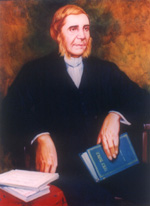 Dr. Rev.
John Wilson, Scottish missionary,
founder of Wilson College, India. Named one
of the Seven Founding Fathers of Modern Bombay (Mumbai), declared with a straight face, and naturally this happy reunion had
now brought India into contact "with the most enlightened nation in the
world." A special effort was made for the conversion of India's aboriginal
tribes: Dr. Rev.
John Wilson, Scottish missionary,
founder of Wilson College, India. Named one
of the Seven Founding Fathers of Modern Bombay (Mumbai), declared with a straight face, and naturally this happy reunion had
now brought India into contact "with the most enlightened nation in the
world." A special effort was made for the conversion of India's aboriginal
tribes:
"They have yet to start on the path of progress," wrote
Hunter. "It remains for us to decide whether the path is to lead them to
Hinduism, or to the pure faith and civilization which we represent."
(source: The Invasion That Never Was -
By Michel Danino and Sujata
Nahar p.19 - 21).
William
Dalrymple, (1965
- ) author of The Last Mughal, and
award-winning travel writer and historian, has
recently written:
"By
1813, a change in the charter of the East
India Company let loose a wave of evangelical missionaries on
India
. The act was pushed through parliament by William
Wilberforce, who told MPs that "the natives of
India
, and more particularly the Brahmins,
were sunk into the most abject ignorance and vice". The Rev
R Ainslie was typical of the new breed of missionaries filling
the cantonments, or military stations, of
India
during the 1830s. Ainslie wrote of his visit to Orissa:
"I have visited the
Valley
of
Death
! I have seen the Den of Darkness!" According to another outspoken
evangelical, the Rev Alexander Thompson: "Those who between 1790 and 1820
held the highest offices in India, were on the whole an irreligious body of men
who approved of Hinduism much more than Christianity: some who hated Missions
from their dread of sedition; others because their hearts 'seduced by fair
idolatresses, had fallen to idols foul'."
 (source:
Gods
and Monsters - By William
Dalrymple - guardian.co.uk).
Refer to chapter on First
Indologists and European
Imperialism. (source:
Gods
and Monsters - By William
Dalrymple - guardian.co.uk).
Refer to chapter on First
Indologists and European
Imperialism.
Robert
Caldwell (1814 -1891) the Bishop of
Tirunelveli, had
a strong anti-Brahmin bias (something, again, non-existent in Tamil literature
or tradition), affirmed that "few Brahmins have written (in Tamil) anything
worthy of preservation" - a crudely false statement when Brahmins (and
non-Brahmins alike) have composed so much devotion literature in Tamil.
This
"brahminphobia" makes perfect sense, however, if we remember that
Caldwell was first and foremost a Christian missionary and that missionaries
always considered Brahmins as the greatest stumbling block to India's
Christianization.
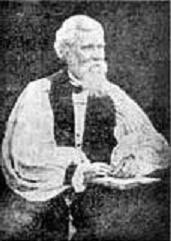
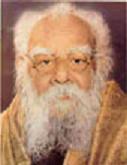
The word
‘Dravida’ was first coined by Adi Sankara, a Brahmin monk from Kerala: in
his shasthrath with Mandana Mishra at
Varanasi
, he had called himself a ‘Dravida shishu’ that is a child of an area where
three oceans meet ie.
South India
.
This
"brahminphobia" makes perfect sense, however, if we remember that
Caldwell was first and foremost a Christian missionary and that missionaries
always considered Brahmins as the greatest stumbling block to India's
Christianization.
The
tactic of denigrating India's ancient heritage in order to create divisions in
her society continues today with full vigor - only with a little more subtlety.
Watch
New
Discoveries on
India
's History.
Refer to
Watch
video - The
Myth of Aryan invasion theory - Part I and Part
II and Part
III and Myth
of Aryan Dravidian Divide and Dwaraka
- A Lost City of Lord Sri Krishna. Watch
Scientific
verification of Vedic knowledge
Watch Lost
/
Submerged
city of
Dwaraka
– The Learning
Channel video. Watch
An
Invasion through Conversion
- videoyahoo.com.
Refer to
The Lost River: On the trail of the Sarasvati - By Michel Danino - Penguin.
Refer
to Invading
the Sacred: An Analysis of Hinduism Studies in America
- By Krishnan Ramaswamy, Antonio de Nicolas and Aditi
Banerjee.
Refer to Communist
Historians: The Enemy Within – By Yvette
Rosser.
Refer to What
Every "Ugly American" Must Know about the "Civilized British
- www.larouchepac.com.
Watch
The
Bible is Bullshit - Penn
& Teller examine the Bible. Refer to
Be
wary of English translations of Hindu scriptures - By Sheena Patel
***
Caldwell's theories were lapped up by more and more
scholars, and finally by E. V. Ramaswamy Naicker
("Periyar") (1879 - 1973).the doyen of Dravidian
politics and iconoclast. Founder of the Dravidian
movement.
Not
only was the teaching and study of Sanskrit starved and discouraged in Tamil
Nadu to break its "hegemony," there was also a drive to
"cleanse" the Tamil language of its large Sanskrit vocabulary. If
anything, this purge of Sanskrit words only contributed to the impoverishment of
spoken Tamil, which, today, mixes in numerous English words - many more than
other South Indian languages do (for example Malayalam which, though issued from
Tamil, still has a large Sanskrit vocabulary).
The
Vedic literature is massive and no other culture has produced anything like it
in regard to ancient history. Not the Egyptians, Sumerians, Babylonians, or
Chinese. So if it was produced outside of India, how
could there not be some reference to its land of origination. For that matter,
how could these so-called primitive nomads who came invading the Indus region
invent such a sophisticated language and produce such a distinguished record of
their customs inspite of their migrations and numerous battle? This hardly
likely. Only a people who are well established and advanced in their knowledge
and culture can do such a thing.
(source: Proof
of Vedic Culture's Global Existence - By Stephen Knapp p. 49 and Vedic
Roots of Early Tamil Culture - By Michel Danino.
Refer to chapter on First
Indologists and European
Imperialism. Refer to Jesus
Christ: Artifice for Aggression - By Sita Ram Goel and Christian
Supremacy: Pushing the Dhimmitude of Non-Christians in America.
Aryan
race did not exist
Dr.
N.S. Rajaram
has astutely observed:
“The
British appealed to the vanity of English-educated Indians by presenting
themselves as ‘new and improved Aryans’
that were in India only to complete the work left undone by their ancestors in
the hoary past. It is not hard to notice that many English-educated Indians
still carry this chip on their shoulder, especially when their education has
been at colonial era institutions like the
Doon School,
St Stephens
and the like.
In some ways
they act more British than the British.”
(source:
A
European look at the Aryan myth – By N.S. Rajaram).
Refer to
Aryan Idols - By
Stefan Arvidsson
 Dr
Suryanath Kamath
former Director
of Karnataka
State Gazetteer has said: Dr
Suryanath Kamath
former Director
of Karnataka
State Gazetteer has said:
"The term Aryan only
means noble. 'European scholars wrongly interpreted the
war mentioned in the Vedas'. '
Indus
Valley
civilisation and Vedic civilisation are not different'"
Indus
Valley
civilisation and Vedic civilisation are not two different civilisations but the
former was only an urbanised version of the latter." Dr. Kamath, former
Director of Karnataka State Gazetteer, was speaking on "Ancient India:
Overseas Connections" organised as a part of Mythic Society's centenary
year celebrations.
Refuted
- Refuting
the existence of Aryan race or an invasion by them, he said: "The
Vedas speak of a war between light and darkness which was wrongly interpreted by
European scholars as a war between light-skinned and dark-skinned people. The
term Dravida means 'inhabitants of Tamil Nadu' and not a race, and the term
Aryan means 'noble'."
Evidence - On the
Indus
Valley
civilisation, he said: "There are factual evidences of a river that ran
parallel to the west of the Sindhu and this was home to the Vedic civilisation
but [river] dried up around 1900 BC which brought an end to the civilisation."
Dr. Kamat spoke extensively about the Indian trade connections with
Persia
and
Rome
during the
Indus
Valley
civilisation. "There is a Roman settlement in Puducherry, established for
commercial activities around 2,000 years ago. Romans had a penchant for Indian
perfumes, diamonds and garments and in return, there was a constant flow of gold
into India ."
Sea routes - "Indian
seamen had knowledge of sea routes much before the Western sailors could have,
and [they] were also well versed in ship building as we can find description of
ships in the Rig Veda. "This is proved by the fact that various
artefacts of Harappan civilisation were found in countries as far as
Rome
and
Mexico
," "that the Indian connection with foreign lands was not just limited
to trade but also extended to culture. "South-East Asian countries such as
Cambodia
,
Indonesia
and the
Philippines
are largely influenced by Indian culture and we can see such influence in
Buddhist Stupas and Hindu temples in these countries."
(source:
Aryan
race did not exist
- thehindu July
14, 2008). Refer to Be
wary of English translations of Hindu scriptures - By Sheena Patel
Evangelical Pseudo-Scholarship - Inventing the Dravidian Race
Colonial administrators and evangelists were able to divide and rule the peoples
of the Indian subcontinent, based on imaginary histories and racial myths – to
the extent of inventing an entire race called ‘Dravidians’.
British colonial administrators, such as Francis Whyte
Ellis and Alexander D Campbell,
studied the grammar of Tamil and Telugu and proposed that these languages might
belong to a different language-family from other Indian languages. Another
British administrator, Brian Houghton Hodgson,
invented the term ‘Tamulian’ to refer to what he considered to be the non-Aryan
indigenous population of India. While Ellis and Campbell proposed a linguistic
theory, Hodgson had a race-based perspective.
A Conspiracy theory is born – Cunning Aryan Brahmins exploited Innocent
Dravidians!
But the catalyst who is credited with the construction of the ‘Dravidian race’
was a missionary-scholar from the Anglican Church.
His name was Bishop Robert Caldwell
(1814-91), an evangelist for the
Society for the Propagation of the Gospel, who combined the
linguistic theory of Ellis with a strong racial narrative. He proposed the
existence of the Dravidian race in his Comparative Grammar of the Dravidian
Race, which enjoys extreme popularity with Dravidianists to this day. Bishop
Caldwell proposed that the Dravidians were in India before the Aryans, but got
cheated by the Brahmins, who were the cunning agents of the Aryan. He argued
that the simple minded Dravidians were kept in shackles by Aryans through the
exploitation of religion. Thus, the Dravidians needed to be liberated by
Europeans like him. He proposed the complete removal of Sanskrit words from
Tamil. Caldwell’s recommended solution was that south Indians should disown
Sanskrit influences and rediscover their original culture through Biblical
categories. Once the Dravidian mind would be free of
the superstitions imposed by Aryans, Christian evangelization would reap the
souls of Dravidians.
De-Indianizing Tamil Traditions
Since colonial days, there has been an ongoing attempt to construct an
ethnic-religious Tamil identity separate from the rest of India, and to find
Christian roots for this so-called ‘Tamil religion.” This entailed manipulating
the interpretations of the literary core of Tamil tradition, which consists of
three main elements:
1.
Thirukural, a classical Tamil text containing
ethical literature that is very much a part of Indian Smriti tradition. Written
by the great sage Thiruvalluvar and through
the ages has become one of the most cherished works of Tamil literature.
2.
Saiva Siddhanta, a Vedanta branch of Saiva
philosophy
3. A huge body of
classical devotional literature.
 George
Uglow Pope (1820- 1908) was another legendary
missionary Indologist who played the lead role in claiming Tamil
classical literature to be un-Indian, un-Hindu, and linked to Christianity.
Once this decoupling of Kural from Hinduism had been achieved Pope pushed his
missionary case further. He declared that Thirukural was the result of Christian
influence, that Thiruvalluvar was a great pioneer who learned ethics from
Christianity. George
Uglow Pope (1820- 1908) was another legendary
missionary Indologist who played the lead role in claiming Tamil
classical literature to be un-Indian, un-Hindu, and linked to Christianity.
Once this decoupling of Kural from Hinduism had been achieved Pope pushed his
missionary case further. He declared that Thirukural was the result of Christian
influence, that Thiruvalluvar was a great pioneer who learned ethics from
Christianity.
Evangelists in the 19th century India encouraged such ideas. Their
basic premise claimed that St. Thomas, a direct disciple of Jesus Christ,
preached in India starting in 52 CE. But these ideas had been rejected centuries
earlier by mainstream Christianity, and even sometimes labeled as heresies.
The Myth of St Thomas – Fabricating History
The story that places the Apostle St. Thomas in India in 53 CE is a lingering
medieval myth. It implicitly includes
colonial and racial narratives; for
instance, that the peaceful apostle ministered to the dark-skinned Indians, who
turned on him and killed him. This myth, however, has no historical basis at
all. Nevertheless, it has been shaped by various Christian churches into a
powerful tool for the appropriation of Hindu culture in Tamil Nadu, by giving
credit to ‘Thomas Christianity’ for everything positive in the south Indian
culture, while blaming Hinduism for whatever is to be denigrated. It further
serves as a tool to carve out Tamils for the common body of Indian culture and
spirituality.
There is also evidence to show that the present San Thome was built on the
remains of a Hindu temple, which was originally the
Kapaleeswara Temple. Archaeological studies by the
Government of India confirm that the
Portuguese built the church on the ruins of a Hindu temple. They have recovered
an inscription of Rajendra Chola, the Imperial Chola
who was devoted to the Vedic religion. A 1967 report of the
Archaeological Survey of India on the
recovery of the 11th century inscription of Rajendra Chola from San
Thome Church in Madras states that the inscription mentions the Chola king as
favored by Goddess Lakshmi, ‘who grants him victory and prosperity.’
Nevertheless, these independent reports are downplayed and suppressed. For
example, in the 6th standard social science textbook taught across
Tamil Nadu, it is blatantly stated as a matter of fact that St. Thomas ‘stayed
at St Thomas Mount and preached Christianity. He was murdered due to religious
strife. His body was buried at Santome Church. None of this is substantiated by
empirical evidence.
Recently, a mega budge film on St. Thomas has been planned by the Catholic
Church to propagate this myth. Rumors that Thiruvalluvar would be shown as a
disciple of St. Thomas in the film led to protests that it was a false claim.
(source:
Breaking India: Western Inventions and Dalit Faultlines -
By Rajiv Malhotra and Aravindan Neelakandan
p. 61 - 90).
A Splendid Hoax
 The
intelligentsia and even the politicians were in for shock at the
World Classical Tamil Conference here on
Friday, when a Finland-based Indologist turned the spotlight on a
Dravidian-Aryan continuum while demolishing the Aryan-Dravidian divide as a
myth. The
intelligentsia and even the politicians were in for shock at the
World Classical Tamil Conference here on
Friday, when a Finland-based Indologist turned the spotlight on a
Dravidian-Aryan continuum while demolishing the Aryan-Dravidian divide as a
myth.
In a landmark presentation that was a complete turnaround from singing paeans to
the 86-year-old Dravidian patriarch M Karunanidhi
and Tamil culture’s glory, renowned Indologist, Prof
Asko Parpola, presenting the conclusions of his three decades-long
research on ‘A Dravidian Solution to the Indus Script Problem’, told a stunned
gathering that “an opening to the secrets of the Indus Script (which is yet to
be deciphered) has been achieved”.
Older forms of Tamil, Kannada and other ‘Dravidian languages’ in his firm
opinion hold the key to take forward this finding that the underlying language
of the Indus Valley Civilisation “was proto-Dravidian”.
The best way to “read” the signs in ‘thousands of short texts’ of the Indus
script was through old Tamil, Prof Parpola, of the Helsinki University in
Finland, drove home in his breathtaking 90-minute talk.
Proof of
hypothesis
As proof of his hypothesis, Prof Parpola correlated several ‘pictograms’ found
in Indus Valley inscribed with ‘Harappan’ stoneware bangles with words like
‘Muruku’ (meaning arm-ring/bangle) from old Tamil literature.
“This (old Tamil) is the only ancient Dravidian source not much contaminated by
Indo-Aryan languages and traditions,” Prof. Parpola, the first recipient of the
‘Kalaignar Karunanidhi Classical Tamil Award’, argued.
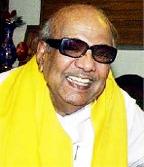 Pointing
out that ‘radiocarbon dating’ has fixed the period of the ‘mature Harappan
phase’, when the Indus Script was used to 2600-1900 BCE, he said the ‘Indus
Civilisation’ collapsed many centuries before hymns were composed in ‘Vedic
Sanskrit’ around 1000 BCE. Pointing
out that ‘radiocarbon dating’ has fixed the period of the ‘mature Harappan
phase’, when the Indus Script was used to 2600-1900 BCE, he said the ‘Indus
Civilisation’ collapsed many centuries before hymns were composed in ‘Vedic
Sanskrit’ around 1000 BCE.
However, the rich religious/cultural heritage in South Asia till now has been
preserved both by the speakers of Dravidian languages (predominantly in South
India) and the people of North India, Prof. Parpola emphasised, to demolish the
myth of a clear Aryan-Dravidian divide. Dr Parpola’s work left the top DMK
leadership seated in front, nonplussed, kindling them to rethink the
Aryan-Dravidian divide issue.
(source:
Jolt to Aryan-Dravidian divide theory
- By
M R Venkatesh - deccanherald.com).
Dr.
N.S. Rajaram sums up the anti-Brahmin campaign of the British
missionaries succinctly in his "
Sarasvati
River
and Vedic Civilization" as follows:
"Christian propagandists like Bishop Caldwell
were unhappy that they could get converts only from the lower strata of Hindu
society. Regardless of internal divisions, all segments of Hindu society-and
many Muslims as well - looked to the Brahmins for moral and intellectual
guidance. Caldwell and his fellow missionaries saw
Brahmins as the greatest obstacle to their program. So they attacked the
Brahmins in the most venomous language as oppressors of society. This is still
the case. The idea was to turn people
against those who were seen as the preservers and perpetuators of Hindu culture
and tradition".
(source:
"Casteism"-
An open letter to Indian Express
-
haindavakeralam.org). Refer to Communist
Historians: The Enemy Within – By Yvette
Rosser.
Sri
Aurobindo
(1872-1950)
was the great light that blazed across India during the first half of the
twentieth century, and debunked this theory of the North-South racial divide.
He
did
not subscribe to the theory that the languages of North and South India are
unrelated. Sri Aurobindo's study of Tamil led him to discover that the original
connection between the Sanskrit and Tamil languages was “far
closer and more extensive than is usually supposed.” These languages are
“two divergent families derived from one lost primitive tongue.”
And, “My first study of Tamil words had brought me to what seemed a clue to
the very origins and structure of the ancient Sanskrit tongue.”
Hindus
collectively have no memory of an Aryan invasion of India that supposedly took
place around 1,500 B.C. Hindu epics do not mention any such invasion. Surely,
the extensive Hindu literature would describe the Aryan invasion if such had
indeed taken place.

Ram in epic battle with Ravana
in Ramayana.
Ravana was a
scholar of the Vedas and was called a Chaturvedi, a knower of the four Vedas.
Ravana
belonged to the same stock as the victorious Rama.
Hindu epics do not mention any such invasion. Surely,
the extensive Hindu literature would describe the Aryan invasion if such had
indeed taken place. The voluminous Vedic literature, 8 times the length of
the Bible, is completely silent about any Aryan migrations. It pre-supposes an
indigenous population. Ancient literatures from Tamil and other languages also
do not say anything about any Aryan migration from Central Asia.
Not
even the Dravidian speaking peoples who are claimed to have lived in India
before the supposed Aryan invasion have any memory of this alleged invasion. It
is hard to imagine that both the “invading Aryans” and the “conquered
native Dravidians” would conspire to eradicate from their collective memory
every trace of the invasion and its consequences.
Watch
video - The
Myth of Aryan invasion theory - Part I and Part
II and Part
III and Myth
of Aryan Dravidian Divide and Dwaraka
- A Lost City of Lord Sri Krishna. Watch
Scientific
verification of Vedic knowledge
Watch
New
Discoveries on
India
's History.
Refer to chapter on Survarnabhumi
and Sacred Angkor
***
Some
people misread Ramayana as describing an
invasion of the South by a Northern prince. The Indian epic Ramayana narrates
Rama's tale, who invaded the island of Lanka to rescue his wife Sita. Sita had
been forcibly abducted by Ravana to the island of Lanka. Nowhere does Ramayana
characterize Ravana as belonging to an alien or an inferior race. Ravana was a
scholar of the Vedas and was called a Chaturvedi, a knower of the four Vedas. Ravana
belonged to the same stock as the victorious Rama. An
Aryan invasion of India from the outside around 1,500 B. C. did not occur.
People of North and South India have lived together in peace as two branches of
one family since antiquity. People who talk of an Aryan conquest of India parrot
the 19th century British viewpoint and do disservice to the cause of unity of
India.
(Refer
to The Secret of the Veda, V 10, Centenary
Edition, p 36, 46). Sri Aurobindo also noted that a
large part of the vocabulary of the South Indian languages (Tamil, Kannada,
Telugu, Malayalam) is common with Sanskrit.
(source:
The
Myth of Aryan Invasion - By Dr. Madan Lal Goel - sulekha.com). For more refer to Vedic
Roots of Early Tamil Culture - By Michel Danino and Hating
Hindus in a 'Scholarly' Way - By Vishal Agarwal. Refer to chapter on Hindu
Scriptures.
Among
Greatest Hoaxes of History?
 Swami
Aksharananda (
) holds a Ph.D. degree in Hindu Studies from the University of Madison,
Wisconsin (USA) has observed: Swami
Aksharananda (
) holds a Ph.D. degree in Hindu Studies from the University of Madison,
Wisconsin (USA) has observed:
"Not
even the Dravidian speaking peoples who are claimed to have lived in India
before the supposed Aryan invasion have any memory of this alleged invasion. It
is hard to imagine that both the “invading Aryans” and the “conquered
native Dravidians” would conspire to eradicate from their collective memory
every trace of the invasion and its consequences."
"This
theory, given the manner in which it is being defended by its promoters, sounds
more like a dogma serving a variety of political and ideological functions. It
is invariably summoned into service to explain almost every traditional
institution and social conflict in India. While
the AIT is avidly and dogmatically advocated by some, in and out of India, the
preponderant mass of the Indian population is blissfully unaware of this
interpretation of their history. "
"Though
it is now seen as heresy to do so, many scholars, both in the West and in the
Indian sub-continent, have long challenged the AIT to be essentially a product
of 19th century Eurocentric scholarship built on an edifice of speculation. Now
with new tools of investigation, including computers and satellites, new
discoveries are regularly made and we are in a position to intern the AIT myth,
once and for all, among the greatest hoaxes of history. It
will require the chipping away of the Aryan Invasion Theory which according to a
Cambridge anthropologist, Edmund Leach,
is like cutting down a 300-year-old oak tree with a penknife. But it’s a work
that has to be done. Ultimately, it will require nothing less than the total
overhaul of Indian history.
"
(source: The
Aryan invasion of India is a theory built on speculation - By Swami
Aksharanda - Stabroek News,
Tuesday, June 17, 2003). Refer to Communist
Historians: The Enemy Within – By Yvette
Rosser.
Refer to Be
wary of English translations of Hindu scriptures - By Sheena
Patel
Refer to Out
of India Theory - wikipedia.org
It
is for nothing that India is today home to the only ancient culture that has
survived the combined waves of Christianity and Islam - all others have
disappeared under the sands of Time.
First
of all, let us try to understand why 19th century scholars found the racial
Apartheid theory of caste, as an annexe to the AIT, so persuasive. In ca. 1810,
the dominant theory of Indo-European origins held that India was the homeland of
this language family. In subsequent decades, doubts developed about the primacy
of Sanskrit in the Indo-European language tree, and parallel with the increasing
linguistic distance between Sanskrit and reconstructed Proto-Indo European, the
putative homeland (Urheimat) of Indo-European was moved away from
India. Initially the Pamir plateau and other parts of Central Asia were
favorites, but from ca. 1850 onwards, a consensus emerged that the Urheimat had
been in Europe itself, with Germany, Poland and Russia as the most credible
candidates.

Churning of the Ocean lintel -
Angkorwat, Cambodia.
Watch
Lost
/ Submerged city of
Dwaraka
– The Learning
Channel video. Refer
to chapter on Survarnabhumi
and Sacred Angkor. Watch
video - The
Myth of Aryan invasion theory - Part I and Part
II and Part
III and Myth
of Aryan Dravidian Divide and Dwaraka
- A Lost City of Lord Sri Krishna. Watch
Scientific
verification of Vedic knowledge.
Refer to Out
of India Theory - wikipedia.org. Refer to Communist
Historians: The Enemy Within – By Yvette
Rosser.
Watch video - Intellectual
Terrorism and Subversion in polity – By Radha Rajan
***
The
shift from India to Europe as the preferred Urheimat was formally due to new
linguistic insights developed in good faith by conscientious philologist, but it
was coincidentally also well-tuned to new political concerns. Apart from rising
nationalism which explains the scramble among scholars to grab the Urheimat
status for their own country, the main factor was European colonialism, then at
its apogee. It seemed natural that the continent whose manifest destiny was the
domination of the world, had brought forth its own proto-historic Indo-European
culture and language.
Conversely, it seemed illogical
that a backward country like India, badly in need of the White Man's civilizing
mission, could have brought forth the superior European culture. "Decidedly,
the English did not want to affiliate themselves to "Mother India'."
(source:
The
Saffron Swastika - By Koenraad Elst
Voice of India ISBN 8185990697 p.243-244). Refer to Jesus
Christ: Artifice for Aggression - By Sita Ram Goel
The determination of the age in which Vedic
literature started and flourished has its consequences for the Aryan Invasion
question. The oldest text, the RgVeda, is full of precise references to places
and natural phenomena in what are now Panjab and Haryana, and was unmistakably
composed in that part of India. The date at which it was composed is a firm terminus
ante quem for the entry of the Vedic Aryans into India. They may have come
from abroad or they may have been fully native, but by the time of the RgVeda,
they were certainly Indians without memory of a foreign homeland.
(source: Astronomical
data and the Aryan question - By Koenraad Elst). Refer to Communist
Historians: The Enemy Within – By Yvette
Rosser.
***
The African Model
Alluding to the way in which the spectacular stone ruins of Great
Zimbabwe were reviewed as a Phoenician creation, M
Posnansky (1982) refers to “the notion
that what was advanced in Africa’s past was the work of outside invaders,
merchants or metal workers, variously derived from Phoenicia, South
Africa, Israel, India and Indonesia.
He adds that:
“This was an idea that was
extremely attractive to a White community that at no time amounted to even 10 %
of the total population of Rhodesia. It served to justify their depreciation of
Black capabilities and past achievements and their occupation of more than half
of the best agricultural land. The preservation of White civilization ultimately
retarded the discovery of Black civilization and hampered the progress of
archaeology.”
(source: Colonial
Indology: Sociopolitics of the Ancient Indian Past - By Dilip K. Chakrabarti p. 26).
In Africa: Divide and Convert
"What a splendid instrument for
spreading Christianity and civilization among the savage races of Africa.!"
- Sir Henry
Morton
Stanley (1841-1904)
the celebrated British African Explorer
remarked, when inspecting the original
maxim gun.
(source: Eastern
Religions & Western Thought - By Sir Sarvepalli
Radhakrishnan
p.341). Refer to Jesus
Christ: Artifice for Aggression - By Sita Ram Goel.
***
 In understanding the methods of missionary scholars, it helps
to look at the scene in Africa resulting from European colonial rule and
Christian missionary activity. This will allow us to see the Aryan-Dravidian
divide as almost a carbon copy. Speaking of the Hutu-Tutsi conflict, anthropologist Jean-Pierre
Langellier recently wrote in the French magazine Le
Monde (reproduced in ‘Colonial Misconceptions’, Deccan Herald,
November 28, 1996): In understanding the methods of missionary scholars, it helps
to look at the scene in Africa resulting from European colonial rule and
Christian missionary activity. This will allow us to see the Aryan-Dravidian
divide as almost a carbon copy. Speaking of the Hutu-Tutsi conflict, anthropologist Jean-Pierre
Langellier recently wrote in the French magazine Le
Monde (reproduced in ‘Colonial Misconceptions’, Deccan Herald,
November 28, 1996):
"The idea that the Hutus and the Tutsis were physically
different was first aired in the 1860s by the British explorer John Speke. The
history of Rwanda (like that of much of Africa) has been distorted
by Peres Blancs (or ‘White Fathers’) missionaries, academics and
colonial administrators. They made the Tutsis out to be a superior race which
had conquered the region and enslaved the Hutus. Missionaries taught the
Hutus that historical fallacy, which was the result of racist European concept
being applied to an African reality. At the end of the fifties, the Hutus used
that discourse to react against the Tutsis."
The horrific Tutsi-Hutu conflicts in
Africa in which millions of lives have been lost is a direct consequence of this
colonial-missionary mischief. So creating dissensions using an artificial racial
divide was a standard missionary tactic; we see this in operation
even today in the northeastern states of India. The ‘Aryan-Dravidian’ divide
was simply another application of the same tactic. So ‘divide and convert’
went hand in hand with ‘divide and rule’. The policy of ‘divide and
rule’ made famous by colonial administrations owe a great deal to Christian
theology and missionary activity.
(Note: The origins of the Tutsi/Hutu conflicts in Rwanda traceable
to Belgian
colonial rule in that region.
The
Belgian Roman Catholic Church favored the Tutsis, admiring
Tutsi leadership qualities, assuming that they could be well harnessed to serve
the Church's own purposes. The church evangelized also, beginning with the
Tutsis, leading more Tutsis to share in the benefits that came with associating
with the colonizers' Roman Catholic culture.
At the end of the war the League
of Nations mandated Rwanda and its southern neighbor, Burundi, to Belgium
as the territory of Ruanda-Urundi. The portion of the German territory, never a
part of the Kingdom of Rwanda, was stripped from the colony and attached to
Tanganyika, which had been mandated to the British.
Sinhalese and Tamil
conflict in Sri Lanka traceable to the English rule in Ceylon).
In Rwanda, missionaries played
a primary role in creating ethnic myths and interpreting Rwandan social
organization -- not only for colonial administrators, but ultimately for the
Rwandan population itself. The concepts of ethnicity developed by the
missionaries served as a basis for the German and Belgian colonial policies of
indirect rule which helped to transform relatively flexible pre-colonial social
categories into clearly defined ethnic groups.
Refer to Christian
Churches and Genocide in Rwanda - Christianity and the Construction of Ethnicity
- By Timothy Longman Vassar College). Refer to Jesus
Christ: Artifice for Aggression - By Sita Ram Goel and
Invasion
Theories: Tools of the Destruction for the Colonists, Racists - By Saumitra
Sen - indiacause.com and Hating
Hindus in a 'Scholarly' Way - By Vishal Agarwal.
Watch
An
Invasion through Conversion
- videoyahoo.com. Refer
to Columbus,
The Indians, and Human Progress
-
By Howard Zinn.
Watch
The
Bible is Bullshit - Penn
& Teller examine the Bible
(source:
A
Hindu View of the World - By N. S. Rajaram p. 85). Refer to chapters on First
Indologists and European
Imperialism. Refer to Inside
France's secret war in Central African Republic
- By Johann
Hari in
Birao
Civilizational
Graveyards? Modus Operandi of Christianity around the Globe
Loss
of African Heritage?
Generations
ago, European colonists
and Christian missionaries looted
Africa
's ancient treasures. Now, Pentecostal Christian
evangelists - most of them Africans - are helping
wipe out remaining traces of how Africans once worked, played and prayed.
(For
more refer to Christianity
vs. the old gods of
Nigeria - yahoonews.com September
4, 2007 and chapter on Conversion).
Racist Theory Behind Genocide
in Africa
An African version of the infamous Aryan invasion theory propagated by
missionaries and colonial rulers triggered the Hutu-Tutsi massacres. Most
Indians are familiar with the Aryan invasion theory and its political misuse.
Some are familiar also with its demolition by science, especially genetics, and
the recent British admission that it was a political ploy used by them in their
policy of divide and rule. While the theory has been fully discredited, some
Western academics and their Indian followers are clinging to it out of concern
for their academic survival. This was what was really behind the
recent controversy over the California school curriculum. What most Indians,
however, don’t know is that the Aryan-Dravidian racial divide was only one
instance of the colonial-missionary tactic of divide
and rule combined with divide and convert. This imaginary racial
difference was emphasized by colonial officials during Belgian rule. The
Belgian Government forced everyone to carry an identity card showing
tribal ethnicity as Hutu or Tutsi. This was used in administration, in providing
lands, positions, and otherwise for playing power politics based on race. This
divisive politics combined with the racial hatred sowed by the invasion theory
turned Rwanda-Burundi into a powder keg ready to explode.
A similar artificial division created in Africa
was to have horrific consequences. The recent Hutu-Tutsi conflicts in which
millions of lives were lost was a direct result of such a tactic applied by
academics, colonial bureaucrats and missionaries.
It is worth noting that the
period, between the two world wars, was the heyday of race theories in Europe .
It seems the notion of superiority due to skin color—real or imagined as in
this case—is so deeply ingrained in the European psyche that they cannot get
out of it. Its politics has collapsed, not due to any dawn of enlightenment on
its proponents but the defeat of Nazi Germany. It has continued however in
Western academia as Indo-European Studies and other guises.
(source: Racist
Theory Behind Genocide in Africa - By Pankaj Saksena). Refer to Communist
Historians: The Enemy Within – By Yvette
Rosser.
Aryan
Invasion of
California
– Global background
Fall
of the Third Reich did not put an end to
academic race theories that formed the core of its ideology. In various guises,
their legacy continues in Western academia as well as in the politics of
countries formerly under European rule. While avoiding overtly racial terms,
scholars in disciplines like Indo-European Studies continue to uphold
scientifically discredited and historically disgraced theories built around the
Aryan myth. Some academics have resorted to media campaigns and political
lobbying to save their theories and the discipline from natural extinction— a
tactic that came to the fore when
California
education authorities attempted to remove these theories from their school
curriculum. The legacy of racism persists in sectarian politics in South India,
and most insidiously in
Africa
where it gave rise to the horrific Hutu-Tutsi clashes
in one of the worst genocides in modern history. A singular feature of this
neo-racist scholarship is the replacement of anti-Semitism by anti-Hinduism.
Mutated racism
In a
remarkable article, “Aryan Mythology As Science And
Ideology” (Journal of the American Academy of Religion1999; 67:
327-354) the Swedish scholar Stefan Arvidsson
raises the question: “Today it is disputed whether or not the downfall of the
Third Reich brought about a sobering among scholars working with 'Aryan'
religions.” We may rephrase the question: “Did the end of the Nazi
regime put an end to race based theories in
academia?” An
examination of several humanities departments in the West suggests otherwise:
following the end of Nazism, academic racism may have undergone a mutation but
did not entirely disappear.
History lesson: transplanting the poison tree
Why
did
India
not go the way of Rwanda-Burundi? Not for
lack of trying but because the cultural foundation of Hinduism proved too
strong. It defeated the designs of politicians and propagandists
masquerading as scholars. It is no coincidence that
Rwanda
and
Burundi
had been converted to Christianity, preparing the ground for sectarian
conflict. Several church figures, including priests and nuns have been found
guilty of complicity in the Tutsi massacres. As in
India
, Christianity was a colonial tool and missionaries little more than imperial
agents.
Their failure in Hindu India is also what is behind the visceral anti-Hinduism
of Witzel and his colleagues. It came to the fore during the recent
California
school controversy.
(source:
Aryan
Invasion of
California
– Global background
- By N S Rajaram).
Refer to Communist
Historians: The Enemy Within – By Yvette
Rosser.
Native
Americans descended
from a lost tribe of Israel?
From the time he was a
child in Peru, the Mormon Church instilled in Jose A. Loayza the conviction that
he and millions of other Native Americans were descended from a lost tribe of
Israel that reached the New World more than 2,000 years ago.
"We
were taught all the blessings of that Hebrew lineage belonged to us and that we
were special people," said Loayza, now a Salt Lake City attorney. "It
not only made me feel special, but it gave me a sense of transcendental
identity, an identity with God."A
few years ago, Loayza said, his faith was shaken and his identity stripped away
by DNA evidence showing that the ancestors of American natives came from Asia,
not the Middle East. For Mormons, the lack of discernible Hebrew blood
in Native Americans is no minor collision between faith and science. It burrows
into the historical foundations of the Book of Mormon, a 175-year-old
transcription that the church regards as literal and without error.
For those outside the faith, the depth of the church's dilemma can be explained
this way: Imagine if DNA evidence revealed that the Pilgrims didn't sail from
Europe to escape religious persecution but rather were part of a migration from
Iceland — and that U.S. history books were wrong.
Critics want the church to admit its mistake and
apologize to millions of Native Americans it converted. Church leaders have
shown no inclination to do so. Indeed, they have dismissed as heresy any
suggestion that Native American genetics undermine the Mormon creed.
(source: Bedrock
of a Faith Is Jolted -
By
William
Lobdell, Times
Staff Writer 2/16/06
LA Times.com).
Watch
An
Invasion through Conversion
- videoyahoo.com.
Page < 1 2 3 4 5 6 7 8 9 10 11 12 13 14 15 >
|